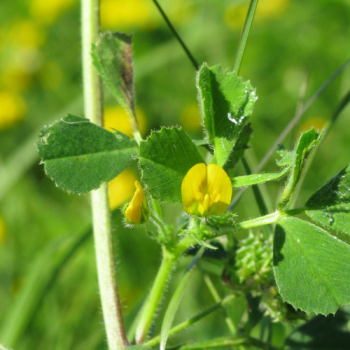The term ‘Medicago’ is derived from the native Greek or Roman name for alfalfa, which is
Medike, Medikein, or Medick. The genus Medicago contains about 70-110 species with a
center of diversity in the Mediterranean and West Asia, from Madeira and the Canary Islands
to China. The majority of the members of the genus Medicago are herbaceous, and the rest are
rarely sub-shrubs or small shrubs. The roots of the majority of the herbaceous species are
noduled, and they are resistant to biological nitrogen fixation. There are two types of
prominent leaves of the medics: compound leaves and trifoliolate leaves. The slashes between
leaflets of the compound leaf are of different lengths in a few species. Shoots of the following
year emerge from rosettes; rare species are with a short-lived stem.
Taxonomy and Classification:
1. Kingdom
Plantae
The plant kingdom includes all plants
2. Clade
Angiosperms
This clade consists of flowering plants that produce seeds enclosed within a
fruit.
3. Clade
Eudicots
A major clade of angiosperms characterized by having two seed leaves or cotyledons.
4. Clade
Rosids
A large clade within the eudicots that includes many economically important
plants.
5. Order
Fabales
The order that includes legumes (beans, peas, lentils, etc.), which have a
characteristic fruit type known as a legume or pod.
6. Family
Fabaceae (Leguminosae)
The legume family, known for its members' ability to fix nitrogen in the soil
through symbiotic relationships with bacteria.
7. Genus
Medicago
A genus within the legume family that includes various species commonly
known as medics.
8. Species
Medicago truncatula
The specific species known for its barrel-shaped pods and used as a model
organism in legume research.

Scientific Nomenclature:
- Scientific Name: Medicago truncatula Gaertn.
The genus name is Medicago, and the species name is truncatula. The authority for the species is Gaertn., indicating the botanist who first described the species.
- Synonyms:
Medicago truncatula has been known by various synonyms in botanical literature, but
the current accepted scientific name is Medicago truncatula.


